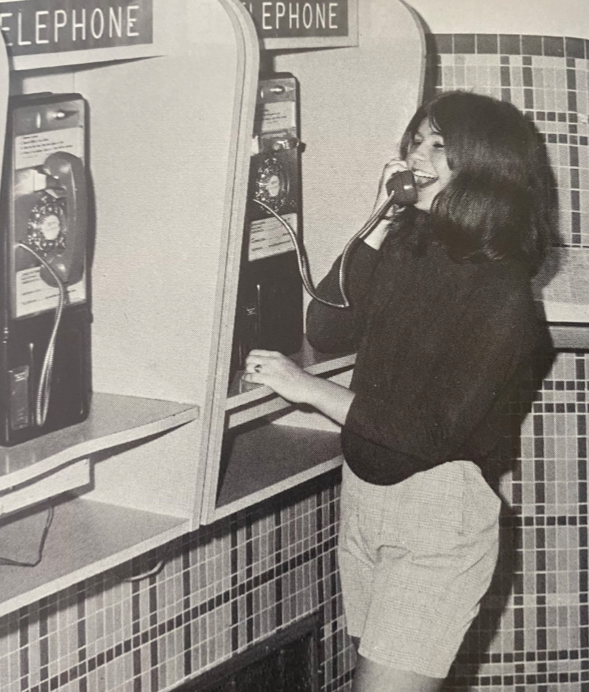Mounds View celebrates 70 years
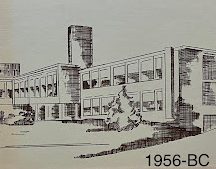
Named after the rolling hills surrounding the area, Mounds View High School was established in 1954 as the first school in the Mounds View school district. The first day of school was Sept. 4, 1954, for new Mounds View students, exactly 70 years before the first day of school for students in the 2024-2025 school year. Prior, in 1951, community members had voted to merge the Mounds View school district with New Brighton and areas of the Roseville and Minneapolis districts.
When Mounds View High School first opened, students ranged from grades 7-11 with the first class graduating in 1956. Although Mounds View only had around 1,050 students when it opened, staff knew in just a few years these numbers would rise from the “baby boomer” generation. The class of 1956 had only 123 graduating students, as many students chose to graduate at their current high schools located in other areas rather than transferring to Mounds View halfway through high school. The largest graduating classes had over 700 students in 1967, 1968 and 1969, compared to current grades having around 400-500 students.
For the first few years, Mounds View’s athletics and activities were limited. Football, basketball, wrestling, hockey and baseball have been key sports at Mounds View since it first opened (all of which were only available to male students). The school used to have a cheerleading squad, but this has since changed to the fall performance team, which focuses more on dancing than creating cheers for sports games.
Along with sports, some activities have been at Mounds View since it opened, namely the red cross club. Clubs such as future nurses, future homemakers of America and Latin are no longer available to students, though students are able to create their own clubs much more easily now. “There didn’t used to be so many clubs. [Now] if you’re trying to find something, there’s got to be something because if you can’t find it, you can start it here now, which is pretty amazing,” said Spanish teacher Laura Rivers, longest-serving teacher at Mounds View.
Administrative assistant Gary Swanson, who has been involved with the district since 1990, says student and staff needs are completely different from when the school was first built. For example, the uses of the College and Career Center, formally called the Guidance Office, have shifted over the past few years to focus on post-secondary student plans. There is also a greater emphasis on student mental health as the school has hired more guidance counselors and promoted teachers connecting more with students. “Sometimes either [students] were not connected to the building enough, they weren’t involved in sports, they just came here, did their classes and left, didn’t have a lot of friends, and were C students,” said Swanson. “Now, you have lots of breakout [activities]; teaching is a lot different. […] You have more at your fingertips, and there’s more teachers and staff who are more available to help you, point you in the right direction, where before you really had to ask.”
Throughout all of the changes over the years, Mounds View at its core still holds many of its same values and challenges. “The more things change, the more they stay the same, you know what I mean? Kids are still dealing with the same issues that they dealt with decades ago; it’s still kind of the same stuff. There’s even things like testing anxiety, getting decent grades, those are all still there,” said Swanson. While high school can come with struggles for any student, Mounds View school spirit has remained strong over the years, and Mounds View continues to be a welcoming place for students.
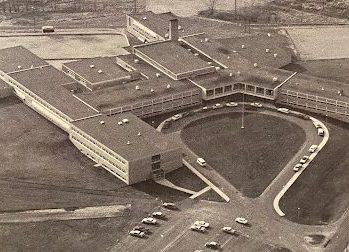
The Mounds View High School building has carried 70 years of history within its cement bricks and the thousands of students that have attended the school since its opening. Each class has added a significant point of culture to school spirit, building the passionate staff and student body that exists today.
As a testament to time, the layout of Mounds View has changed quite a bit. Renovating old classrooms, removing the smoking room, adding onto the structure of the school and repurposing the bomb shelter nestled in the basement, the modernized school leaves questions of what the building used to look like.
For the first few months Mounds View was open, building size was limited. The gym still had dirt floors, and the cafeteria — now health teacher Ross Fleming’s room in the basement — remained unfinished. “The school wasn’t done. The gym was still dirt. They hadn’t floored it yet. The kids up until December…had to eat their lunches in their classrooms,” said administrative assistant Gary Swanson. Once the cafeteria was finished, students squeezed down into the basement for lunch.
Not only was the cafeteria packed, but classrooms as well. During the late ‘60s, the school was too small to house its 700 students per grade. The solution was portable classrooms placed at the back end of the building. “Portables would have one or two classrooms, so you had to walk out there in the back…where the MAC is, kind of in the baseball fields. [There would be] five or six portables out there,” Swanson said.
During the 1970s, with some of the largest class sizes in Mounds View’s history, the old building received large add-ons that created the building today. The school underwent its first renovations to the building in the library and cafeteria in order to house the greater number of students. Major parts of the school such as the commons, science wing and the art room didn’t exist until the third addition in 2001. The art room itself used to be the library, and the windows looking down from the art room used to be the front of the school. With these updates, the school expanded by nearly half of its original size.
Just like in the past, each part of Mounds View’s building remains well-used. Even the flex spaces, built in 2019 during the fourth addition, are adored by students and staff alike. “I think that’s a big and awesome change, because there’s flexible spacing for kids to just work more quietly or to spread out a little bit,” said Spanish teacher Laura Rivers, longest serving teacher at Mounds View.
Most of the new add-ons to the building promote a happy, healthy student body and a new way to learn. Similar approaches are planned for the future of the building. “I envision a commons that has our school store with a glass front, our coffee shop and our Career and College Center, all right there visible to kids in the place that they mostly meet,” said Principal Rob Reetz. Reetz wants to turn the commons into the center of Mounds View’s student body by moving these parts of the school to a more accessible location.
While the building has changed quite a bit, each consecutive change has been aimed at making Mounds View more livable for students. With the amount of change in the last 70 years, Mounds View’s physical essence will continue to develop in expected and unexpected ways.
Throughout the years, Mounds View High School has developed administratively, socially and technologically, leading to drastic changes in school policies. Since its establishment 70 years ago, traditions and rules regarding a vast spectrum of topics have shaped Mounds View into what it is today.
Over the last couple of decades, Mounds View has shown a turn towards stricter policies. Old traditions have slowly faded away, like one where students would streak — or run across the field, partially naked — during the homecoming game. In 2004, the school took extreme measures with police officers and dogs to put a stop to the tradition, which has now disappeared altogether.
Another example of modern strictness at Mounds View has to do with students’ freedom to be on or off campus. “We used to be tighter a long time ago, and then in the 2000s and 2010s, they kind of loosened up. There was lots of freedom to kind of roam around,” said administrative assistant Gary Swanson.
In recent years, however, the school has backtracked to tighten restrictions for students, mostly due to concerns about students’ whereabouts, especially in emergency situations. “To me, it’s accountability. Example: you get to arrive late, leave early if you have a study hall first or sixth hour…The important [thing is] that you have to go sign-in in the forum and be in the forum. You can’t just fill up the building. Again, if we had a fire or something, we can look at [records to see if a student was in the building,]” said Swanson.
When it comes to class instruction, Mounds View made a general switch from lecture-based learning to collaborative learning. For example, teachers used to use the term “sage on the stage” — meaning students would sit in a classroom while teachers output content at them, removing students from the teaching process. The switch to more hands-on learning has been beneficial as students move on to post-secondary learning environments. “The feedback that I’ve gotten from students after they’ve gone to college is that they really need to know how to be able to work with different people in different groups,” said Spanish teacher Laura Rivers, the longest-serving teacher at Mounds View.
Another change that benefited students came in 1972, when Title IX, a federal law, ended sex-based discrimination in government-funded activities like sports, and all female students obtained equal opportunities to participate in any sport available at the school. Prior to the law’s passing in the ‘50s, the only athletic activities available to girls were baton and flag twirling. 1972 marked the first year of the girls gymnastics team. In 1994, girls hockey was established as a varsity sport by the Minnesota State High School League’s Representative Assembly, and shortly after, Mounds View had its own girls hockey team in 1995.
Throughout Mounds View’s history, policies regarding phones have evolved just as rapidly as the phone industry itself. Landline telephones didn’t enter classrooms until 1993. “If we wanted to make a phone call, we had to walk down the hallway,” said Rivers. With the introduction of smartphones only a decade later, students had a new, unexpected distraction. As more students owned phones, focus in classrooms became more threatened, leading administrators to take action. This year’s phone policy is a stricter version of previous attempts to limit the distraction phones posed to learning.
Whether it be through integrating girls into sports or providing new ways for students to learn, Mounds View’s fight for progress is never ending. Through several policies, Mounds View High School aims to create an accepting community for all students.
-
 SpreadWhat happens when religion meets education?
SpreadWhat happens when religion meets education? -
 SpreadClimate change: the clock is ticking...
SpreadClimate change: the clock is ticking... -
 SpreadThe Healthcare Crisis: sky high prices
SpreadThe Healthcare Crisis: sky high prices -
 SpreadThe overwhelming culture of college applications
SpreadThe overwhelming culture of college applications -
SpreadSchool security
-
 Spread2024 Presidential Election
Spread2024 Presidential Election -
 SpreadThe rising trend of overconsumption
SpreadThe rising trend of overconsumption -
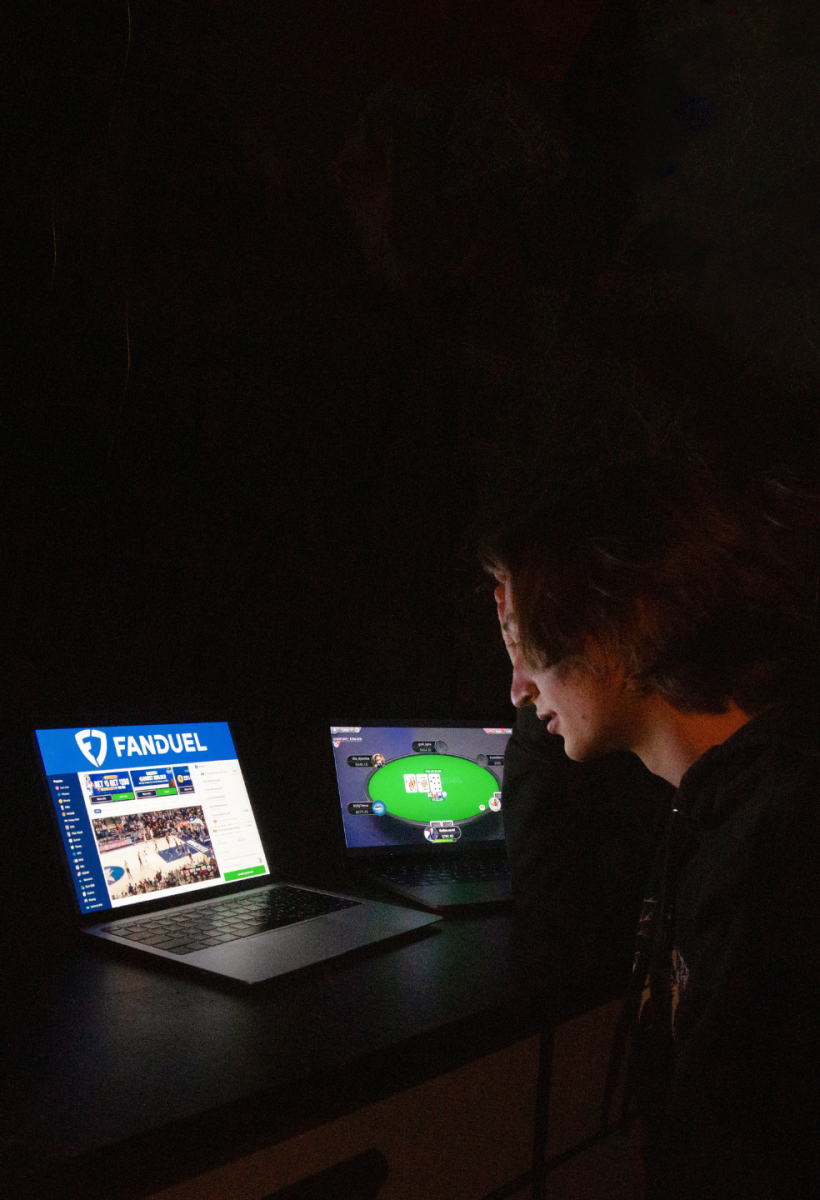 Spread[COLLECTION] The rise of sports betting
Spread[COLLECTION] The rise of sports betting -
 SpreadThe downfall of ELA education
SpreadThe downfall of ELA education -
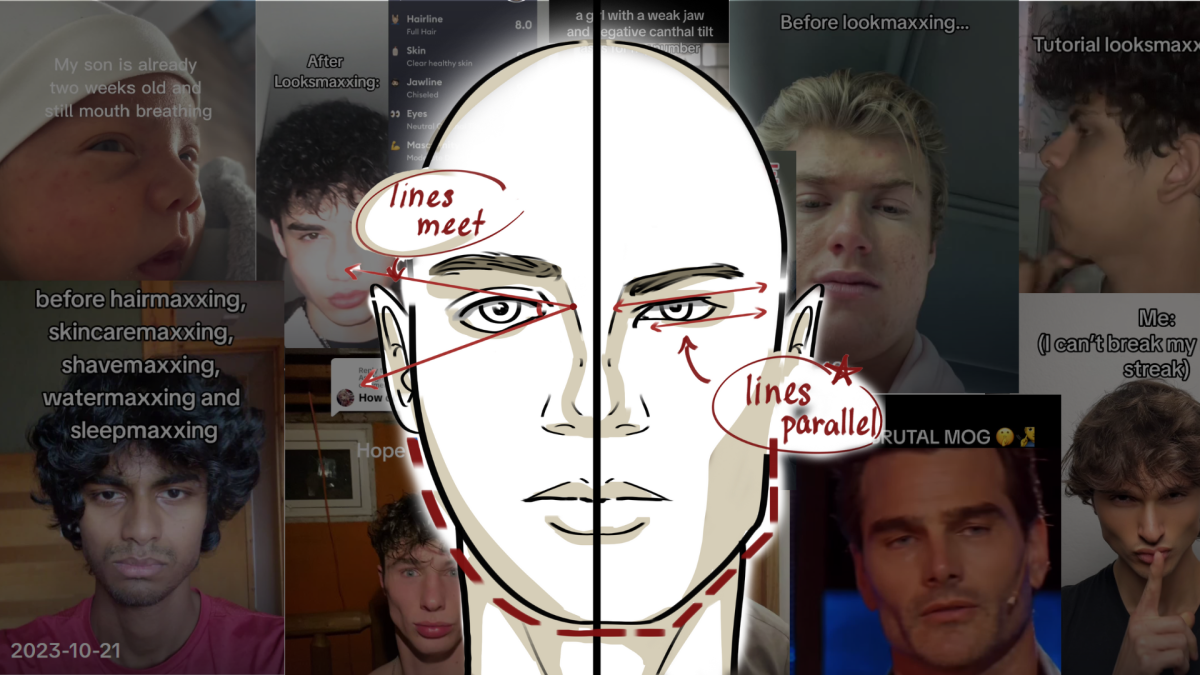 SpreadThe dark side of looksmaxxing
SpreadThe dark side of looksmaxxing








